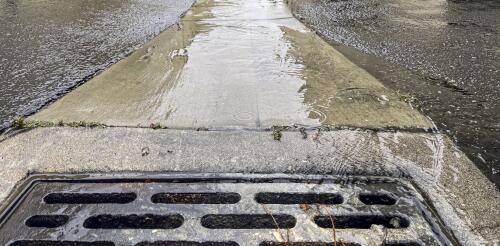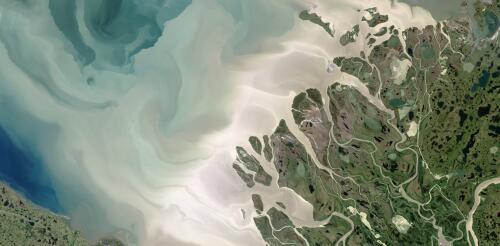Runoff
“When it rains, it pours” once was a metaphor for bad things happening in clusters. Now it’s becoming a statement of fact about rainfall in a changing climate. Across the continental U.S., intense single-day precipitation events are growing more frequent, fueled by warming air that can hold increasing levels of moisture. Most recently, areas north of Houston received 12 to 20 inches (30 to 50 centimeters) of rain in several days in early May 2024, leading to swamped roads and evacuations. Earlier in the year, San Diego received 2.72 inches (7 centimeters) of rain on Jan. 22 that damaged nearly 600 homes and displaced about 1,200 people. Two weeks later, an atmospheric river dumped 5 to 10 inches (12 to 25 centimeters) of rain on Los Angeles, causing widespread mudslides and leaving more than a million people without power. Events like these have sparked interest in so-called sponge cities – a comprehensive approach to urban flood mitigation that uses i...
As the Arctic warms, its mighty rivers are changing in ways that could have vast consequences – not only for the Arctic region but for the world. Rivers represent the land branch of the earth’s hydrological cycle. As rain and snow fall, rivers transport freshwater runoff along with dissolved organic and particulate materials, including carbon, to coastal areas. With the Arctic now warming nearly four times faster than the rest of the world, the region is seeing more precipitation and the permafrost is thawing, leading to stronger river flows. Major river basins of the Arctic region. NOAA Arctic Report Card We’re climate scientists who study how warming is influencing the water cycle and ecosystems. In a new study using historical data and sophisticated computer models of Earth’s climate and hydrology, we explored how climate change is altering Arctic rivers. We found that th...
Flowers grown on inexpensive floating platforms can help clean polluted waterways, over 12 weeks extracting 52% more phosphorus and 36% more nitrogen than the natural nitrogen cycle removes from untreated water, according to our new research. In addition to filtering water, the cut flowers can generate income via the multibillion-dollar floral market. In our trials of various flowers, giant marigolds stood out as the most successful, producing long, marketable stems and large blooms. Their yield matched typical flower farm production. Why it matters Water pollution is caused in large part by runoff from farms, urban lawns and even septic tanks. When it rains, excess phosphorus, nitrogen and other chemicals wash into lakes and rivers. These nutrients feed algae, leading to widespread and harmful algae blooms, which can severely lower oxygen in water, creating “dead zones” where aquatic life cannot survive. Nutrient runoff is a critical issue as urban areas expand,...


